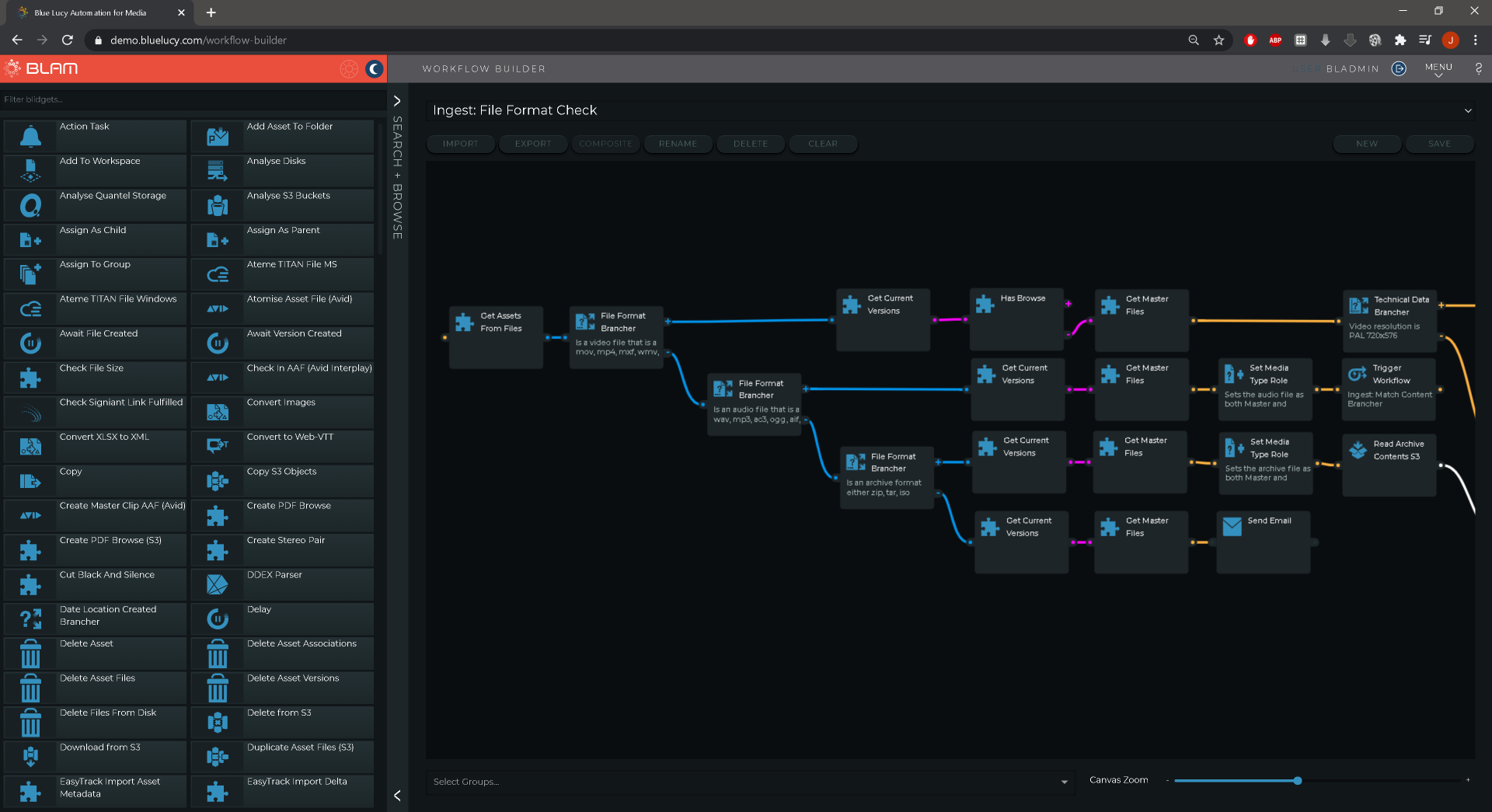Blog
The Automation Paradox
Part 2
In my recent post The Automation Paradox I highlighted the risks associated with developing a workflow orchestration platform ‘in-house’. Cloud based services are very easy to get started with – intoxicatingly so – but building and supporting an enterprise class workflow orchestration platform is a resource hungry undertaking.
As a business which provides a cloud-based production and content supply chain platform as a service we would take that view…wouldn’t we? nonetheless BLAM has been built to fulfil a burgeoning operational and business need. Our industry has suffered with some high-profile media management projects having suboptimal outcome. BLAM was developed in response to these so that media operators could benefit from the cloud quickly and without risk.
RAD
BLAM provides a “low-code / no-code” approach to workflow development through a self-service ‘drag and drop’ workflow builder. It enables media operations professionals to quickly access the benefits of cloud-based services without needing to directly write any software. The BLAM user interface provides a workflow blueprint development tool that removes the need for a software development function between the cloud services and the operational business.
Connecting the workflow orchestration capability directly with the operational expertise shortens the capability development cycle and delivers focused outcomes, quickly. This is a code free Rapid Application Development (RAD).

The no-code approach to developing workflows in BLAM uses a drag-drop-connect model. More than 200 functional blocks, Blidgets, are available
Experienced Based Platform
BLAM is the product of six years of development, including a full ground-up release and 20+ years of building and implementing automation and media management systems with tier one broadcasters and distributors. The platform is trusted by media operators ranging from independents producing a few hundred hours a year to a company like Banijay, the largest international producer and distributor in the world. We believe there is genuinely no need to embark on a self-build project no matter how big or complex your current operation.
Extensible
A case for the self-build is often made on the basis that a workflow or operating model is specific to a given media organisation and as such “no off-the-shelf platform will meet our business needs”. Indeed, many of the functions and workflows may be particular to a given business model but these tend to be nuances which represent a fraction of the overall workflow.
It is also the case that some development work may be needed for a specific integration such as to a legacy system which holds useful data.
In situations where there is no alternative but to develop additional functionality, BLAM supports hybrid models through a fully featured SDK – Blue Lucy can also provide the professional services directly or through partners to develop the software. Our SDK is for the development of BLidgets so any new software that is developed will run in the BLAM workflow runner alongside our own component. This is significantly more powerful than simply calling an API – it is effectively extending the capability of the core platform in a safe and supportable manner.
So, even in cases where development is necessary, BLAM will get you to 80+% functional coverage off the shelf and close the gap with bespoke code that runs in a warrantied framework. Truly the best of both worlds.
Financial Context
A small self-build project can rapidly grow into a significant operational cost in the DevOp (Development Operation). Whether this cost is placed above or below the COGS (cost of goods sold) line is immaterial, the cost is fixed and difficult to meaningfully reduce. As such build or buy is a conundrum for many operators and includes questions as to whether a media organisation should become, even in part, a technology organisation. Ultimately it comes down to a question of money, so to wrap up here is some financial context based on BLAM:
- The annual cost of a base, but fully featured, BLAM is about that of a good Dev Ops manager (without the NIC and pension contributions).
- A pilot BLAM can be up and running for the same cost as the recruitment fee of a single development head and deliver value in less than half of a typical one-month notice period. If the pilot doesn’t deliver measurable benefits, you can turn it off without severance pay and you can retain the knowledge (data).
- The numbers speak for themselves, literally, in the BLAM Finance panel. In this view, operators may track the cost of consumed services and in the case of service providers, sales revenues too – the panel provides a real time P&L of a media services business. BLAM not only delivers a high return on investment, it includes the tools to test it.
BLAM Finance allows operators to create and monitor a profit and loss view – tracking is in real time.
Get it touch to arrange a pilot and see how BLAM can enable a cloud strategy without needing to establish a technology department. See how Off the Fence have done just that here.
Photo by Patryk Grądys
By Julian Wright
Share this story
Share on X Share on Linkedin Share via email